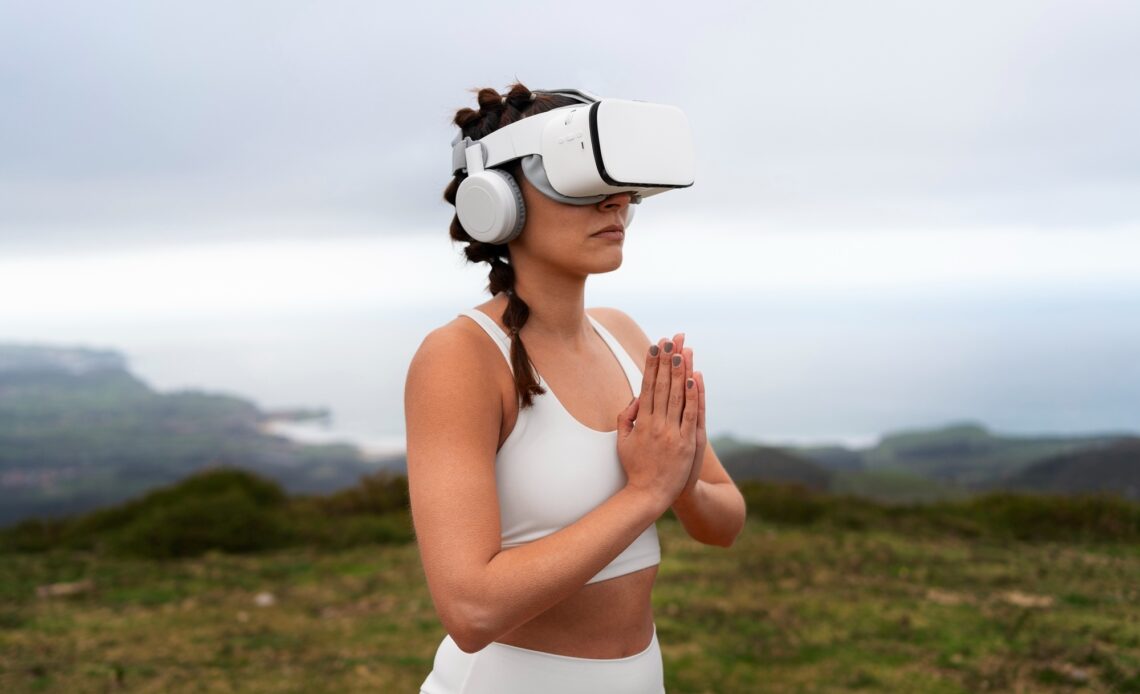
Virtual reality is used as a therapy in mental health.
Crédits photos : Pexels
In 2024, virtual reality and augmented reality are no longer a nebulous concept for the uninitiated. Every mobile phone can create a realistic animated filter, and the biggest brands, from Apple to Meta, have introduced their headsets. Yet too few people are aware of the many uses to which these technologies can be applied.
Wrongly associated with entertainment alone, it is in rehabilitation and mental health centres that they have earned their place. For many patients, these technologies can be described as everyday superheroes. But how have they been integrated? To help you see things more clearly, we have put together a selection of 5 examples of how they can be used in psychiatry and psychology.
Teleporting and overcoming anxiety
The use of virtual reality in the field of mental health represents an opportunity for integrative therapy. VRT (Virtual Reality Therapy) complements conventional treatments. They optimise the use of analgesics, anxiolytics and anaesthetics.
French company Butterfly Therapeutics has developed a digital sedation medical device to reduce pain and anxiety. It’s not a new process! Since 2011, the company has been deploying immersive systems in hospitals and care centres. Wearing a virtual reality headset, patients are immersed in a world of sounds and images that stimulate their capacities. The effect is instantaneous. Users find themselves in a modified state of consciousness, reducing anxiety and the level of pain felt during a medical procedure.
Health professionals are noting positive effects on their patients. True relaxation and stress reduction have been reported. The future should continue to surprise us. Last January, Coreod Space presented a device combining virtual reality and artificial intelligence to enhance the well-being of astronauts.
Transforming yourself to show empathy
One of the first virtual reality experiences to appear in the sphere of empathy was “The Ennemy”. Launched in 2015, this work invited users to come and meet Israeli and Palestinian soldiers. Each character tells of his or her nightmares, dreams and hopes… The aim of creator Karim Ben Kelifa, a war reporter, was to rehumanise the combatants and bring them face to face with each other’s emotions. The ambition was to understand each other better in order to ease tensions. Many other experiences followed: immersing yourself in the body of a man when you are a woman, sharing the daily life of civilians in war zones, living the day of a disabled person…
In Europe today, virtual reality has taken this notion of empathy one step further and turned it into a real machine. Reverto, for example, uses virtual reality to confront violent offenders with their actions. Equipped with a virtual reality headset, the offender finds himself in the shoes of his victims. It’s a way of preventing and fighting against psychosocial risks and discrimination. Michel Reilhac, VR film producer and pioneer in his field, will be speaking alongside Angelina Dayton on Thursday 11 April 2024 at Laval Virtual to discuss this subject in greater detail.
Changing your environment to treat phobias
At the therapist’s side, the phobic patient wears a virtual reality headset. An immersive environment appears before their eyes. They are brought face to face with the object of their fears. The phobias apprehended can then be multiple:
- fear of heights or snakes;
- public speaking;
- agoraphobia;
- traveling on a plane…
Thanks to virtual reality, the person is directly immersed in a realistic environment. This is a more effective method than the imaginary one traditionally used in therapy. Step by step, patients learn to face their phobias again. They regain their autonomy and freedom at their own pace. It’s a way of desensitising them through direct confrontation with the source of their phobias.
Going back in time to grieve
It’s one of the most hotly debated applications of all: using virtual reality to bring the dead back to life. In 2020, a team of Korean researchers orchestrated a reunion between a mother and her 7-year-old daughter who had died 3 years earlier. The exchanges were heated as to whether or not this method was beneficial. The ultra-realistic face of the child in front of her mother, wearing a virtual reality headset, her voice trembling, gave way to emotion. The mother herself described it as “a real paradise”. She was able to see her little girl turn into a butterfly and fly off to other skies.
Psychologists agree that the grieving process is unique to each individual. The experience seemed to do the mother some good. They did not rule out the possibility that this type of application could be an opportunity for people at the end of their bereavement process under professional guidance. This was not the first time that virtual technology had played with the realm of the dead. In 2012, rapper 2Pac was resurrected on stage at Coachella as a hologram for a concert.
Regenerate your body and fight phantom pain
90% of people who have had an amputation feel that their limb is still there. For some, this perception can be felt as real pain. This is known as phantom pain.
Since 2017, researchers have been exploring the use of virtual reality to treat this suffering. The number of studies on the subject continues to grow. The effectiveness of treatments has been highlighted.
The practice is based on the research of the Indo-American neurologist VS Ramachandran. In the 1990s, he came up with the idea of placing a person’s amputated limb in a box fitted with a mirror. By looking up, the victim could then see the reflection of an intact arm that appeared to be his own. The brain sees a healthy limb and reduces pain signals.

Thanks to the realistic images offered by immersive technologies, this process has been perfected. In a virtual world, patients find themselves using their missing limbs, picking flowers and throwing them into a pond. New neuronal connections are eventually created. The dysfunctional parts of the brain repair themselves…
As you can see, Virtual Reality Therapy offers a wide range of possibilities:
- treatment of phobias;
- stress and anxiety;
- depression;
- schizophrenia;
- addictions;
- eating disorders;
- perceptions of body image;
- post-traumatic stress disorder…
Incorporating new techniques into an approved health care pathway is accessible to everyone. But how do you meet the right experts? Every year, the entire European community in the field gathers in Laval (France) for its eponymous Laval Virtual exhibition. The event is open to professionals from all sectors. It’s an opportunity for healthcare practitioners to meet the leading players and test their experiments.


